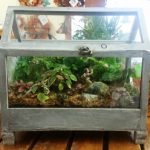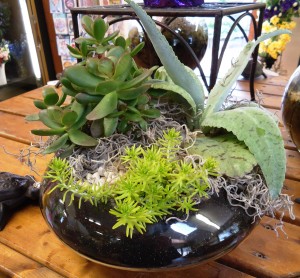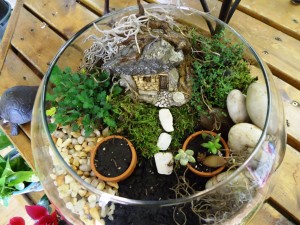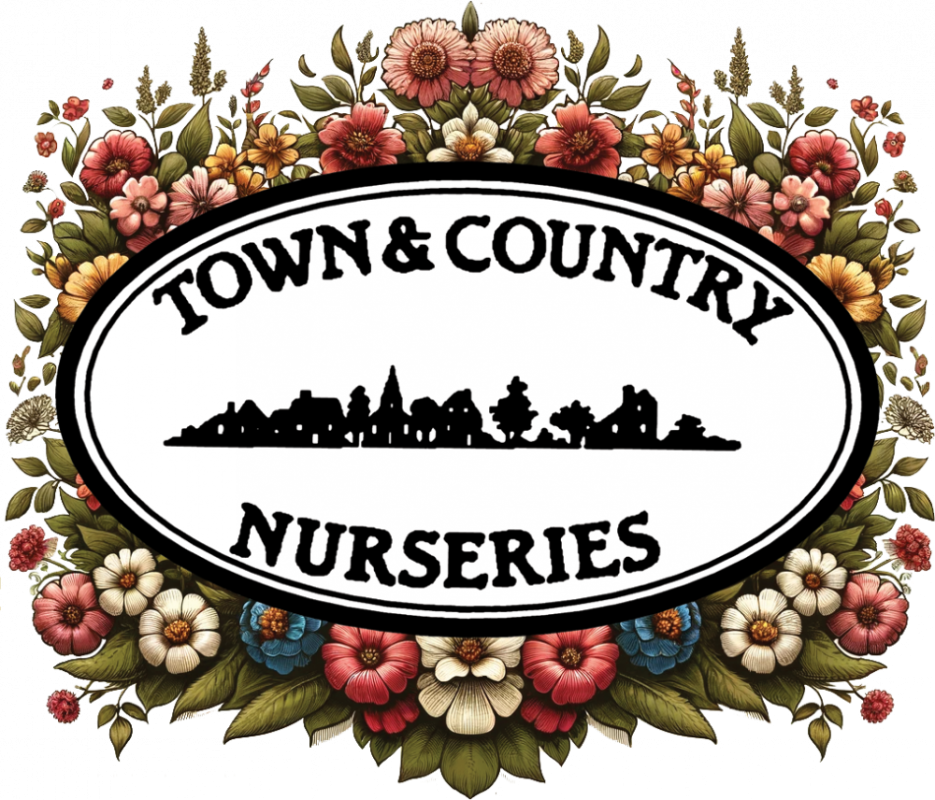 Terrariums are a fun and creative project for any gardener. We carry a full line of plants, décor and hard goods to get you started. Learn more about what is a Terrarium and How to Get Started.
Terrariums are a fun and creative project for any gardener. We carry a full line of plants, décor and hard goods to get you started. Learn more about what is a Terrarium and How to Get Started.
What is a Terrarium?
A terrarium is a glass or clear container which is designed to hold small plants and animals in controlled conditions. There are two types of terrariums:
Open: can tolerate some direct sunlight. However, too much sun may burn leaves that are in direct sunlight with the sides of the container.

Closed: A closed terrarium can also be an open terrarium to which a cover has been added. Closed terrariums should be placed where they will receive bright light, but no direct sunlight. If placed in direct sunlight, the temperature inside the container rises a lot and could cook the plants.

.
Creating A Terrarium:
Materials:
- Glass container or other clear vessel with a large enough opening for placing plants inside (with or without top)
- Soil
- Sphagnum Moss
- Pebbles or stones

- Crushed Charcoal
- Plants
- Fun Landscaping Materials- decor, figurines, moss, etc. . .
Before you Begin:
Whether you choose to have an opened or closed terrarium, keep in mind that all plants should have the same environmental needs (i.e. succulents vs. cacti). If you want to grow sun-loving plants, an open container will work just fine. Plants that thrive in high levels of humidity should be placed in a closed container.
- Be sure you have selected soil appropriate to your desired plants.
- Choose slow-growing plants as to avoid overcrowding.
- Clean the container that you have chosen with a 1:9 bleach and water mix.-DO NOT USE SOAP
Directions:
- After the container has been cleaned out, layer pebbles or rocks at the bottom for drainage.
- Add a thin layer of charcoal on top of the stone to help keep the soil fresh.
- Add a thin layer of sphagnum moss
- Add soil, make sure there is enough soil to be able to create a hole large enough for the plants root system. Note that steps 1 thru 4 should be one-third of the height of the selected container.
- Place plants in holes created, largest to smallest. Add some more soil around plants and lightly pack down. Do not over plant.
- Groundcover should be added last. Remember, you are making a miniature landscape, don’t forget to have fun with it and add in small animal figurines.
Recommended Plants:
• Low-light terrariums:
-Aluminum Plant
– Polka Dot Plant
– Red veined Prayer Plant
– Artillery Fern
– Maiden Hair Fern
– Pothos
-Peperomias (dwarf)
– Helxine — baby’s tears
– Button Fern
– Ficus pumila ‘Minima’ (creeping fig)
– Croton
– Dracena
– Lucky Bamboo
– Herbs
– Ivies (miniature)
-Fittonia — nerve plants
-Carnivorous plants
-Marantas – prayer plants
-Selaginella mosses
Flowering Plants:
It is not always recommended adding in flowering plants since most need good air circulation. Also after most flowers bloom, there is a high chance of them rotting. If you are new to the Terrarium game then we recommend sticking to nonflowering plants.
- Viola hederacea — Tasmanian violet
- Tillandsias — air plants
- -Bromeliads

- -Miniature orchids
- -Rhizomatous begonias (miniature)
- – Cyclamen
- -Members of the African violet family such as chiritas, African violets, streptocarpus, episcias
High-light terrariums (open containers): Desert plants require dry soil and low humidity. They also need warm temperatures and long periods of bright light
- Cacti
- Succulents: jade, aloe, borro’s tail, earth stars, echeveria, haworthia, sedum
Terrarium Care:
Watering: Check every couple of weeks to see if your terrarium needs water. Use a spray bottle to mist the plant leaves, except the African Violet, and the moss or sand at the bottom when it becomes dry.
Light: Prefers moderate to bright light. Avoid direct sunlight as it may cause too much humidity and condensation, and effectively cook your plants.
- If the glass begins to fog over or gets a large number of water droplets, you have excess water building up. In this case, remove the terrarium lid for a couple of hours and let some water evaporate, then replace the lid.
- Pull off any leaves that show signs of yellowing or damage and prune plants if they grow too large
- Do not fertilize because you do not want to encourage growth
- Avoid putting the Terrarium next to a radiator. The heat of a radiator can kill your plants quickly.
